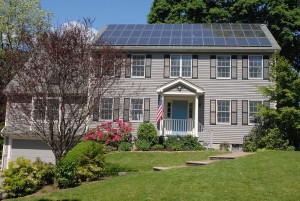The Massachusetts Institute of Technology and Worcester’s Quinsigamond Community College will be teaming up with SUNY Polytechnic Institute and several other educational institutions on a Federal project to advance the applications the photonics industry in manufacturing. The partnership, known as Advanced Manufacturing Partnership 2.0, represents $600 million in Federal funds which will go toward establishing the nation’s first Integrated Photonics Institute of Manufacturing Innovation.
Massachusetts will be teaming up with educational institutions across the nation, utilizing the Commonwealth’s higher educational strengths to explore the applications of the photonics industry in manufacturing. MIT will lead in the development of cutting-edge technology such as robotics and complex medical devices. Meanwhile, Quinsigamond will provide practical training for the development of a middle-skill workforce that will be ready to fulfill a growing number of job opportunities in the manufacturing industry as a whole.
“Massachusetts is a key partner because of the technical expertise of the faculty and researchers here at MIT, and in part, because AIM photonics MIT is coordinating the education and workforce development program for the entire nation in this area,” said Krystyn Van Vliet, a professor of materials science and engineering and MIT’s faculty lead for the project.
The American Institute for Manufacturing (AIM) began an integrated photonics program in July that was announced by Vice President Joe Biden. The AIM integrated photonics program is one of nine such institutions dedicated to different areas of the manufacturing field.
 Massachusetts has a long tradition of manufacturing and industrial production. Although textiles and mills may be a thing of the past, burgeoning industries have provided a new realm of opportunity for a state that is already familiar with manufacturing and its challenges. New tech sectors such as biotechnology, wearable devices, and robotics, combined with easy access to the educated work force needed to produce them, has put the Bay State in a favorable position to spearhead the development of future technologies.
Massachusetts has a long tradition of manufacturing and industrial production. Although textiles and mills may be a thing of the past, burgeoning industries have provided a new realm of opportunity for a state that is already familiar with manufacturing and its challenges. New tech sectors such as biotechnology, wearable devices, and robotics, combined with easy access to the educated work force needed to produce them, has put the Bay State in a favorable position to spearhead the development of future technologies.
“This partnership is key to developing the revolutionary technologies that will underpin the next wave of advanced manufacturing in Massachusetts and ensure the competitiveness of our manufacturing sector as a whole. We are harnessing education and innovation to build a platform for economic growth across Massachusetts. I look forward to seeing the continued great work from our Commonwealth’s innovation and education communities, and [to] participating in this national center with our neighbors in New York,” said Governor Charlie Baker.
The partnership serves as a part of Baker’s ongoing commitment to advancing the manufacturing industry within Massachusetts. Continued growth in the manufacturing sector will lead to new opportunities for everything from electronic design and manufacturing equipment, to medical devices, robotics, cyber security, and more. Van Vliet predicts that the AIM initiative will begin actively producing new technologies and opportunities for advanced manufacturing as early as January 2016.





